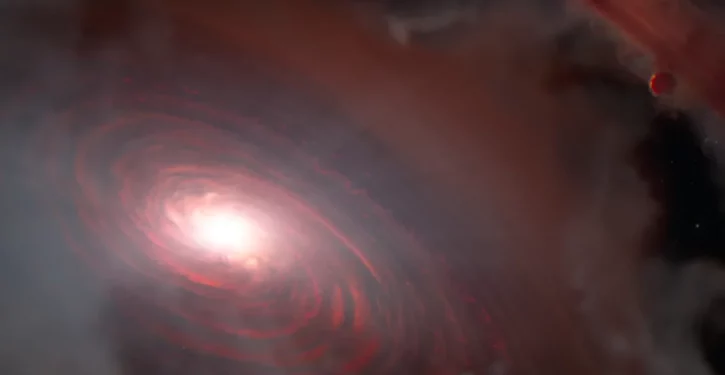
Astronomers recently detected water vapor swirling close to a nearby star — a sign that the planets forming around it may someday be able to support life. CNN reports:
The young planetary system, known as PDS 70, is 370 light-years away. The star at its center is about million years old and is cooler than our sun. Circling it are two known gas giant planets, and researchers recently determined that one of them, PDS 70b, may share its orbit with a third “sibling” planet that is forming there.
Two different disks of gas and dust — the ingredients necessary to form both stars and planets — surround the star. The inner and outer disks are separated by a gap spanning 5 billion miles. The gas giants are in the gap, where they orbit the star.
The Webb telescope’s Mid-Infrared Instrument detected the signature of water vapor in the inner disk, less than 100 million miles from the star. Astronomers believe that inner disk is where small, rocky planets similar to those in our solar system could form if PDS 70 is anything like our solar system. In our system, Earth orbits at a distance of 93 million miles from the sun.
A study detailing the findings published Monday in the journal Nature.
“We’ve seen water in other disks, but not so close in and in a system where planets are currently assembling. We couldn’t make this type of measurement before Webb,” said lead study author Giulia Perotti, a postdoctoral fellow at the Max Planck Institute for Astronomy in Heidelberg, Germany, in a statement. PDS 70 is relatively old for a star that hosts a planet-forming disk….The presence of water vapor suggests the planets could contain water in some form. Only time will tell whether the planets form — and if they are potentially habitable for life.



